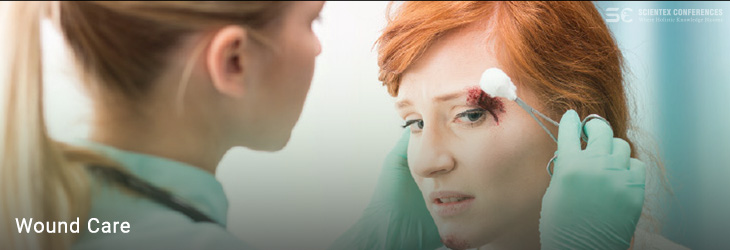Track: Wound Care

Woundcare is essential for managing various types of wounds, from surgical incisions to chronic ulcers and traumatic injuries. The field encompasses a range of strategies designed to support and enhance the body's natural healing processes. Recent advancements have introduced innovative technologies and materials that address the complexities of wound healing.
Bioengineered Skin Substitutes:
Bioengineered skin substitutes are advanced materials designed to replace damaged skin and support the healing of chronic or severe wounds. These substitutes can be composed of living cells or synthetic materials that promote regeneration and repair. Their application is particularly beneficial for managing wounds that are resistant to conventional treatments.
Negative Pressure Wound Therapy (NPWT):
Negative Pressure Wound Therapy utilizes a vacuum-like device to apply controlled negative pressure to a wound, which helps to remove excess fluid and promote tissue healing. This technique accelerates the healing process by enhancing blood flow and reducing edema. It is widely used for complex and difficult-to-heal wounds.
Growth Factor Therapy:
Growth Factor Therapy involves the application of proteins that stimulate cell growth and tissue repair. These factors can be applied directly to wounds to enhance the body's natural healing response. By accelerating cell proliferation and collagen production, this therapy supports faster and more effective wound closure.
Advanced Dressing Materials:
Advanced dressing materials include a variety of high-tech options designed to optimize the wound environment and promote healing. These materials may include hydrogels, foam dressings, and antimicrobial coatings that provide a protective barrier and maintain a moist wound environment. Their use improves the efficiency and comfort of wound management.
Hyperbaric Oxygen Therapy (HBOT):
Hyperbaric Oxygen Therapy involves breathing pure oxygen in a pressurized room or chamber, which enhances the oxygen supply to tissues and promotes healing. This therapy is effective in treating wounds that are slow to heal due to poor oxygenation, such as diabetic ulcers and radiation injuries. The increased oxygen levels aid in reducing inflammation and accelerating tissue repair.
Scientific Highlights
- Skin Diseases: Acne, Psoriasis, Dermatitis
- Cosmetic Surgery
- Dermatopathology
- Pediatric Dermatology
- Facelift (Rhytidectomy)
- Aesthetic Medicine
- Plastic Surgery
- Diet & Nutritional Supplements for Healthy Skin
- Oral and Maxillofacial Surgery
- Dermato oncology
- Dermatology
- Trichology and Hair Transplantation
- Vitiligo Treatment
- Rhinoplasty and Otoplasty
- Fungal Skin Infections
- Cosmetology
- Skincare Treatment
- Dermatologic Disorders
- Clinical Trial and Case Reports
- Teledermatology & AI Diagnostics
- Wound Care
- Leprosy in Modern Dermatology
- Onychomycosis
- Regenerative Aesthetics
- Targeted Drug Delivery Systems
- GI Health & Skin


